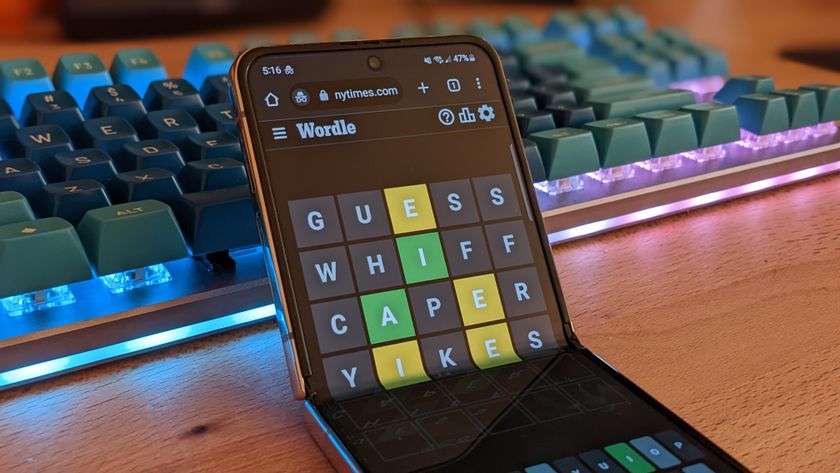The Mage's Tale is one of the first VR games I've played that feels like the full package. It separates itself from the multiplayer shooters and shorter showcases the Vive and Rift are currently known for with a long campaign (over 10 hours), dungeons to explore, spellcrafting and leveling. It's more than a good idea for VR that loses its shine after 30 minutes. Even so, The Mage's Tale is a light, action-oriented dungeon crawler, with simple leveling and combat that doesn't strive for the party tactics of a game like Legend of Grimrock.
Developer InXile built The Mage's Tale as a more action-y spinoff of The Bard's Tale, a traditional dungeon crawler series with turn-based combat (except InXile's own action RPG spin off in 2004, which this is more like). You play a young mage whose master is ambushed and kidnapped, and have to strike back solo rather than with a party of heroes, wandering the oddly linear halls of a subterranean dungeon to grow stronger and rescue him. The rhythm of that exploration usually involves entering a large room, fighting some goblins or undead, solving a puzzle, looking for secrets, then moving through some corridors to do it all again.

It's a fun but simple dungeon crawler, with a dose of inXile's silly fantasy humor sprinkled throughout—at one point I saved a talking wall from drowning by lowering the water level. The wall then poetically explained he had tried drinking enough of the water to save himself. The studio's experience with the RPG craft shines through in VR, but the more intimidating parts of the dungeon crawler genre have been trimmed away in this instance.
Solving many of the puzzles is just a matter of flipping the right switches and often only opens a hidden wall with a secret item, allowing you to walk past the challenge if you prefer. Leveling up, which would mean meticulously distributing points in a traditional RPG, is reduced to choosing one of two permanent buffs each time—do you want extra health or faster spell recharging?—instead of using a skill tree or ability points. The familiar trappings of an RPG are here, but they don't share the depth of inXile's other games. Additionally, I could nearly always find health potions directly after a fight, so managing damage as I got deeper into a level was never really a concern.

The combat is focused on movement, with just you and your Touch controllers fighting in real-time rather than a party. You pick customizable spells and then hurl fireballs, ice lances, electricity, and wind at your enemies until they drop dead, physically moving to dodge incoming arrows and running away from swords as you do it. Throwing spells is easy—you get a soft lock-on to whatever target you're looking at—and spells can be modified to better home in on enemies. You still have to aim your throws, but it helps avoid the unwieldy throwing of a game like Superhot VR, where I often found myself spiking shurikens or bottles straight into the ground. The downside of this system, however, is that it doesn't take long before tossing homing spells in an overhand motion gets a bit dull.
The Mage's Tale's varied arena designs help keep the combat interesting. While I started out in straightforward shooting gallery-style rooms with nothing but archer enemies, the levels quickly became more diverse and complex, requiring more and more movement. I could just stand still at first, but the introduction of shielded melee goblins pushed me out of my hidey holes and forced me to hop around the map as I charged up spells. Movement is accomplished with pretty standard point-and-jump teleporting or short hops and turning via the left analog stick—both work fine, but not having a third Oculus sensor setup behind me meant I couldn't physically turn around without losing tracking, which is a big detriment in this game, and a problem the Vive version won't have when it is eventually released.

The spell crafting is charming in its presentation, if similarly straightforward. You can find bottles that form a spell's base—fireball, lightning, etc.—and then add a few modifiers (also hidden around levels) to make the spell your own. For example, my fireballs were green, would seek enemies, and cause a burn over time, but I could have made them orange, bounce around the room, have a longer range, and burst with confetti upon hitting an enemy. Returning to my cauldron to throw new ingredients in the pot was as simple as raising my hand in the air, so finding a new ingredient and then testing out every possible combination with it was a blast.
The biggest gaming news, reviews and hardware deals
Keep up to date with the most important stories and the best deals, as picked by the PC Gamer team.
I haven't beaten The Mage's Tale yet, which is an exciting thing to be able to say about a VR adventure game right now. There's a lot more for me to get through, and I am looking forward to doing so if only to see what other strange effects the spellcrafting will allow. Even if VR doesn't have an especially deep RPG yet, it's got a fun and accessible one, and The Mage's Tale is the type of extended experience I'm glad VR developers are now spending the time to make.

















